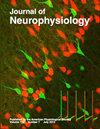Distinct and complementary roles of corticospinal and corticoreticulospinal pathways in motor behaviors post stroke.
IF 2.1
3区 医学
Q3 NEUROSCIENCES
引用次数: 0
Abstract
Taga et al. (J Neurophysiol 132: 1917-1936, 2024) investigates the distinct roles of the corticospinal tract (CST) and corticoreticulospinal tract (CReST) in chronic motor behaviors post stroke. Their findings indicate that CST projection strength is associated with motor control and muscle individuation, whereas CReST projection strength is associated with strength. These results provide evidence that the CST and CReST pathways serve unique but complementary functions in regulating human movement.
脑卒中后运动行为中脊髓皮质和脊髓皮质网通路的独特和互补作用。
Taga等人(2024)研究了皮质脊髓束(CST)和皮质网状脊髓束(CReST)在中风后慢性运动行为中的不同作用。他们的研究结果表明,CST投射强度与运动控制和肌肉个性化有关,而CReST投射强度与力量有关。这些结果证明CST和CReST通路在调节人体运动中具有独特但互补的功能。
本文章由计算机程序翻译,如有差异,请以英文原文为准。
求助全文
约1分钟内获得全文
求助全文
来源期刊

Journal of neurophysiology
医学-神经科学
CiteScore
4.80
自引率
8.00%
发文量
255
审稿时长
2-3 weeks
期刊介绍:
The Journal of Neurophysiology publishes original articles on the function of the nervous system. All levels of function are included, from the membrane and cell to systems and behavior. Experimental approaches include molecular neurobiology, cell culture and slice preparations, membrane physiology, developmental neurobiology, functional neuroanatomy, neurochemistry, neuropharmacology, systems electrophysiology, imaging and mapping techniques, and behavioral analysis. Experimental preparations may be invertebrate or vertebrate species, including humans. Theoretical studies are acceptable if they are tied closely to the interpretation of experimental data and elucidate principles of broad interest.
 求助内容:
求助内容: 应助结果提醒方式:
应助结果提醒方式:


